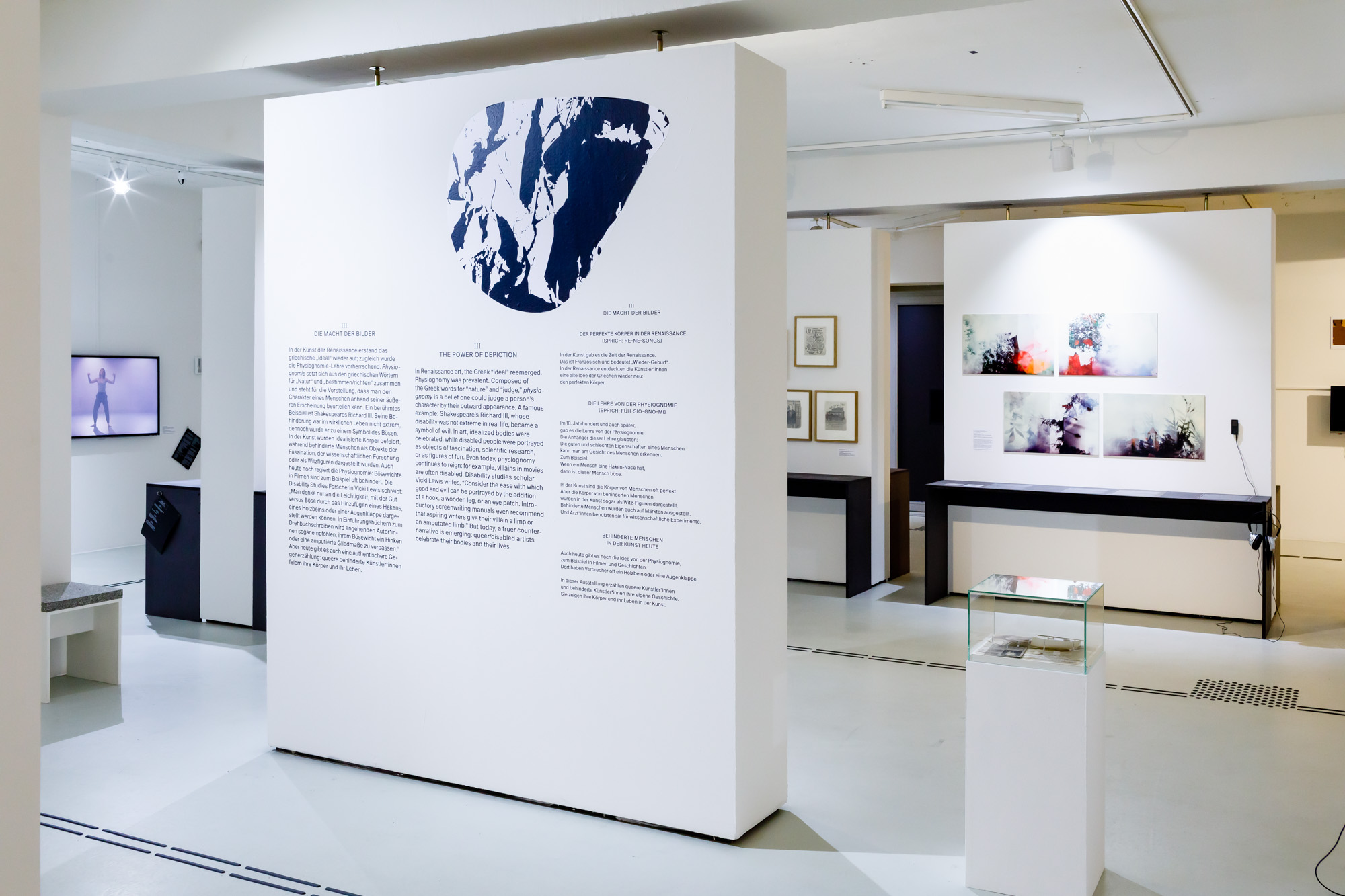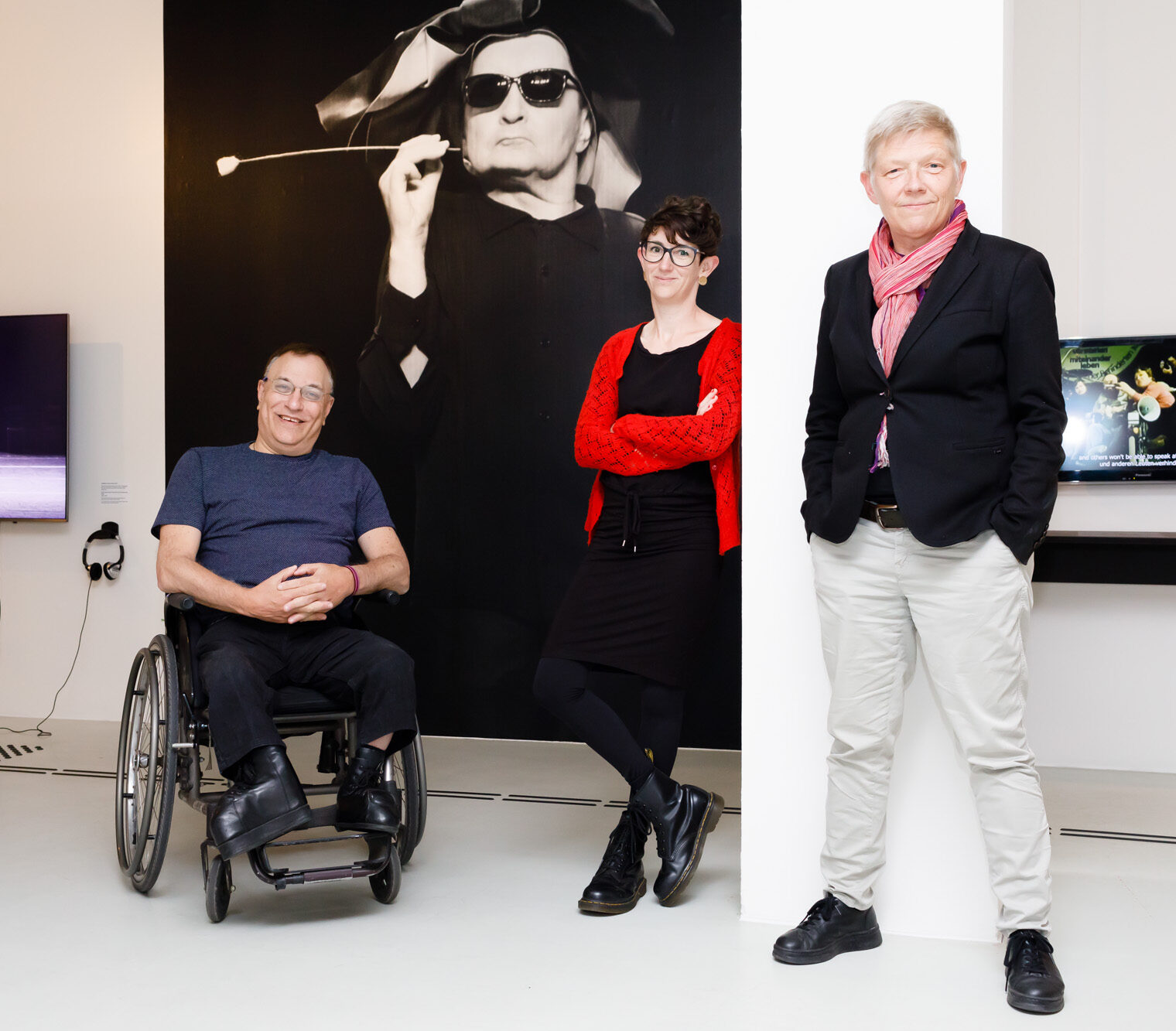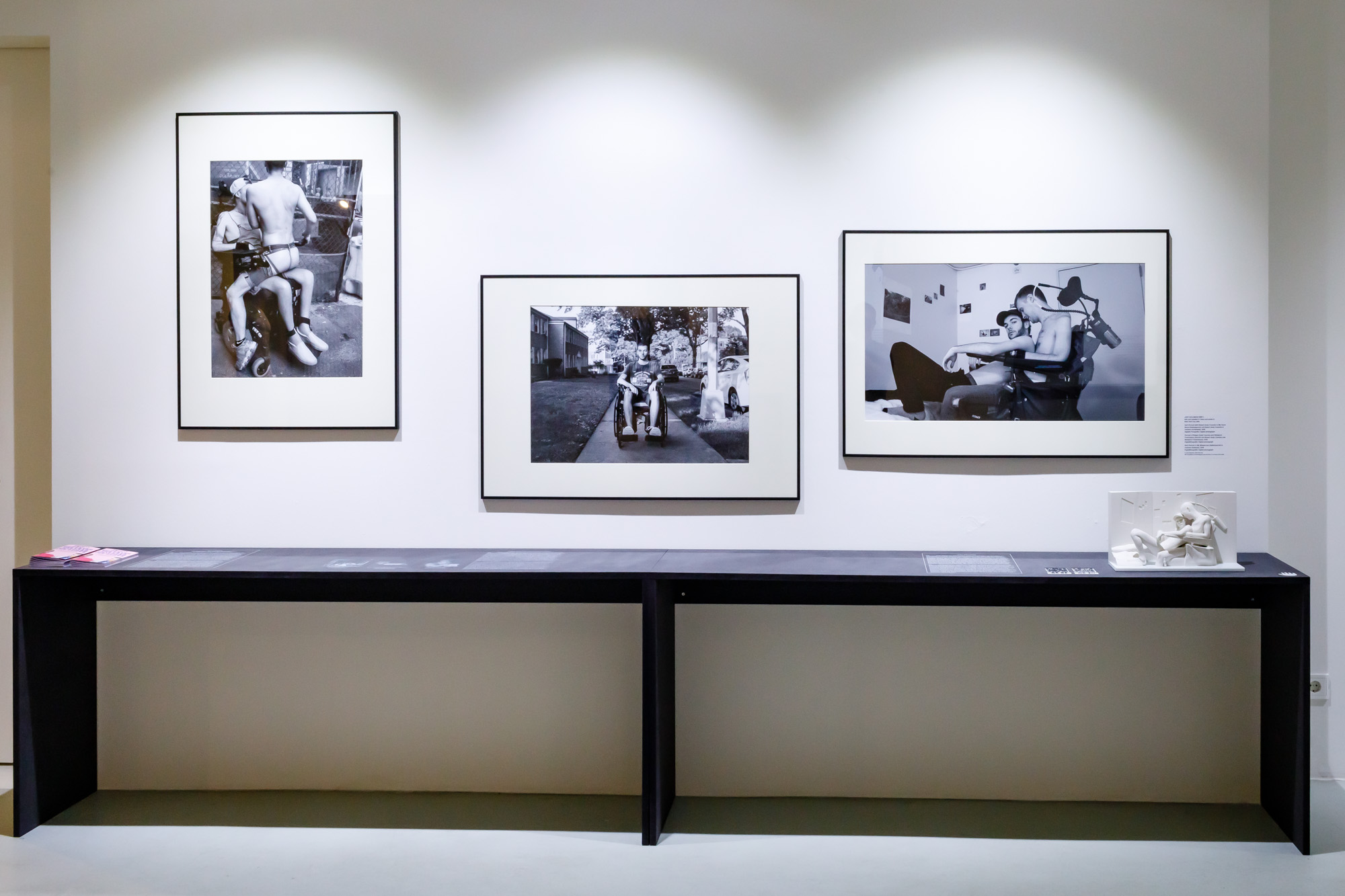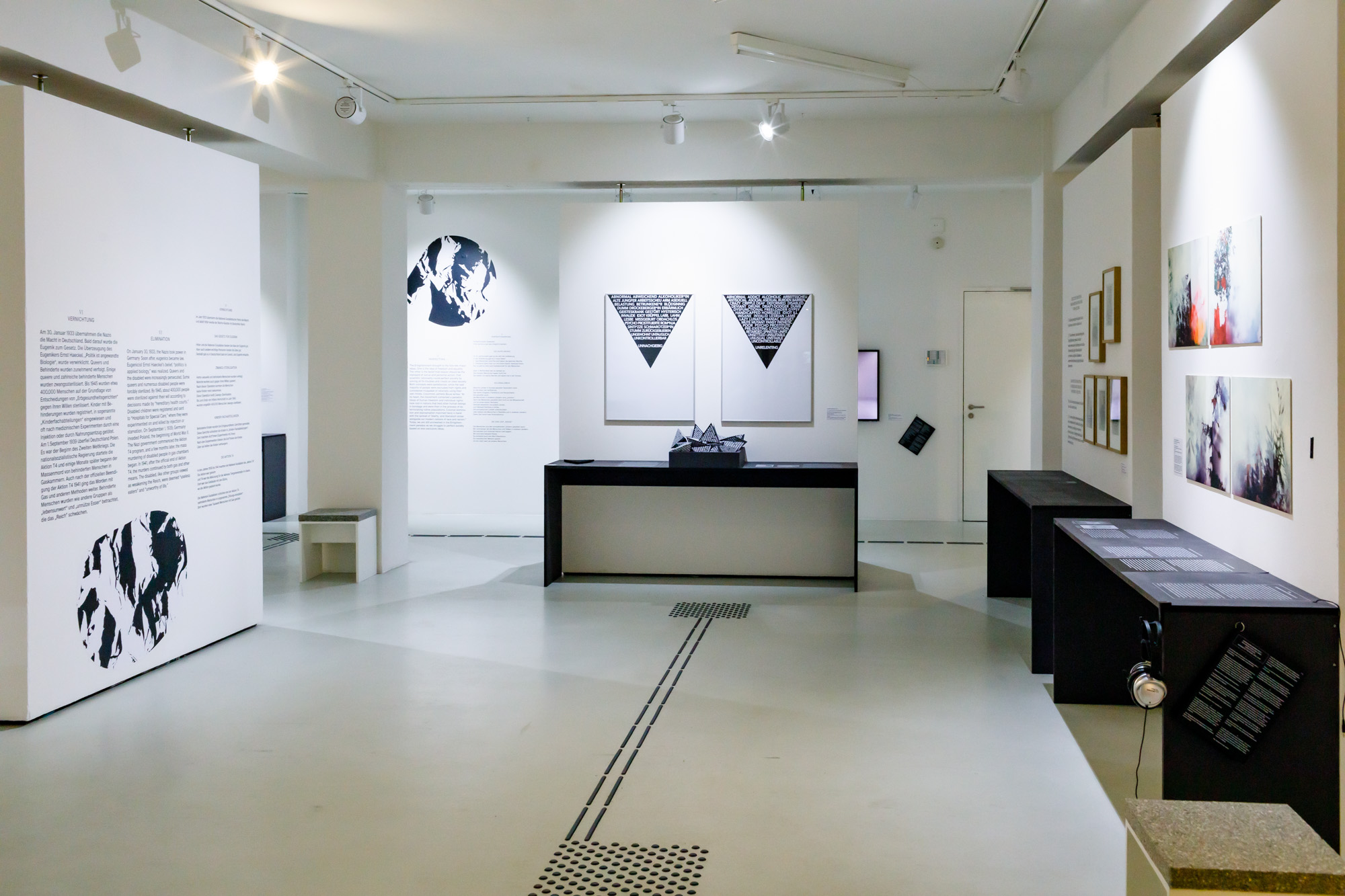Queering the Crip, Cripping the Queer is an exhibition on queer/disability history, activism, and culture at the Scwules Museum, Berlin. It brings together work by over 20 international contemporary artists whose work explores the multiple historical, cultural, and political intersections of queerness and disability. Disability Arts International spoke to one of the exhibition’s three curators Kate Brehme about what they describe as an exhibition which is the ‘first of its kind’.

Schwules Museum in Berlin, Germany was founded in 1986 and is dedicated to queer arts, history and culture. Since 2009, it has been funded by the state of Berlin. Its current premises, where it has been based since 2013, houses four exhibition spaces, a reference library, an archive, a café, a workshop and offices. It has a growing national and international profile, known for its radical work. Renowned queer/disabled author Kenny Fries was invited to give a talk as part of Schwules Museum’s Homosexuality_ies exhibition in 2015.
“Kenny realised there was no adequate representation of disabled people as part of the exhibition,” explains fellow curator Kate Brehme. “Thus, he and Schwules Museum curator Birgit Bosold decided to take on the challenge of creating an exhibition that would acknowledge this important history and lived experience – the intersection of queer and disabled experiences.” And that is how the idea for Queering the Crip, Cripping the Queer was born. “So far as we know, there haven’t actually been any exhibitions to date devoted to this theme,” claims Brehme.
“Kenny’s lived experience as a queer person with a disability has largely informed the exhibition’s narrative. His knowledge of the history of both queer and disability activism and involvement in their international communities is complimented by Birgit Bosold’s extensive knowledge of queer history and activism from a German perspective.”
Later, the pair brought on the expertise Brehme as a disabled curator who works with young and emerging artists. “I was able to bring contemporary and local perspectives,” Brehme explains. “Along with my experience in accessible exhibition design, to the exhibition.”

Another key collaborator was academic, Carrie Sandahl, whose work exploring the similarities and intersections between queer and disabled experiences and identities is described as “seminal for the conceptualisation of the exhibition”. Prinzhorn Collection in Heidelberg has lent important historical artworks by once-institutionalised artists for the exhibition.
During the exhibition’s opening weeks in September 2022, they collaborated with Sophiensaele theatre in Berlin, who staged a performing arts festival of the same name. It featured international performers Anajara Amarante (Brazil/Germany), Pelenakeke Brown (USA), Quiplash (UK), and Sindri Runudde (Sweden), with work by each also featuring in the exhibition.
The process of selection and curation of works and artists for the exhibition was guided by a balancing act between identifying similarities and differences between intersecting identities, experiences and histories.
“What was most important for us was to make sure that the majority of the artists in the exhibition identified as both queer and disabled, and that the historical objects that we showed, depicted queer, disabled people as they would have wanted to be shown. We selected artworks and objects that reflect the significant moments and shifts that helped shape queer and disabled histories as a collective story, but we also tried to demonstrate that within this story there are incredibly different experiences. This meant for each of us, reaching out to and beyond our own existing networks of disabled artists, locally and internationally, and re-examining objects from the Schwules Museum collection itself, from a crip/queer perspective.”

Naturally, with the exhibition being informed by disabled lived experience, accessibility for audiences was paramount for the curators.
“Our approach was to incorporate access into every aspect of the curatorial and exhibition design process. We began early by planning a healthy access budget into our funding application. We introduced new access concepts to the Schwules Museum and helped them build on their existing infrastructure and processes to accommodate these new ideas. And when designing the exhibition we tried to think through access and aesthetics together, rather than in opposition with each other or tacked on at the end (which it unfortunately so often the case in designing exhibitions).
It was actually quite easy at times, as we drew form our own personal experiences and asked ourselves: ‘what do our bodies need from an exhibition? What would make it a comfortable experience for us/our disabled friends?’ The challenge was in finding solutions to the various time and budget constraints that are always inherent in exhibition making. A lot of what we created (tactile art works, audio guides, tactile floor system, events and tours in German Sign Language, and so on) are not innovative or new, but I think our approach of considering access as an essential part of the design process, perhaps even one of its departure points, is something that doesn’t happen very often.”

Brehme believes many of the barriers disabled artists face are similar to those queer artists face, but also acknowledges how disability is often left out of conversations about diversity, at least in a German context.
“I think the biggest barriers for disabled and queer artists alike is the stigmatisation of both. Often there are far too many assumptions made by gatekeepers in the art world that the quality of artwork produced or level of professionalism by disabled or queer artists is lesser than their non-disabled or non-queer counterparts, or ignorance around how to approach or work with them. Furthermore, there is a distinct lack of accessible or safe spaces for both groups to work and exhibit in the arts.
We see a lot of museums talk about how important access to life, education and culture is for minority groups, however there are very few spaces in the arts (especially in a German context) that are physically accessible and willing to make reasonable accommodations necessary for ensuring accessible working conditions for disabled and queer arts workers. I wouldn’t say that any group has done more than the other to achieve success, and certainly the two communities already learn from each other, however it is unfortunately the case that here in Germany, when the theme of diversity is addressed within the mainstream arts sector, often disability is not taken into account or not thought about as intersecting with other forms of identity.”
Brehme and fellow curator Fries and Bosold believe Queering the Crip, Cripping the Queer is a landmark exhibition, which they hope will have a lasting impact. It has already garnered interest from curators at some of Berlin’s most established museums.
“The exhibition is the first international exhibit exploring the multiple historical, cultural, and political intersections of queerness and disability, which is surprising given that, and I quote Carrie Sandahl here, both ‘share a history of injustice: both have been pathologized by medicine; demonized by religion; discriminated against in housing, employment, and education; stereotyped in representation; victimized by hate groups; and isolated socially’. We do think it can have an impact on the discourse around queerness and disability as, unfortunately, one can still find that discourses on queerness often neglect a disability perspective, and discourses on disability don’t often include queer perspectives. We hope this exhibition changes that and encourages others to think more intersectionally.”
You can watch a curators’ tour of the exhibition below:

